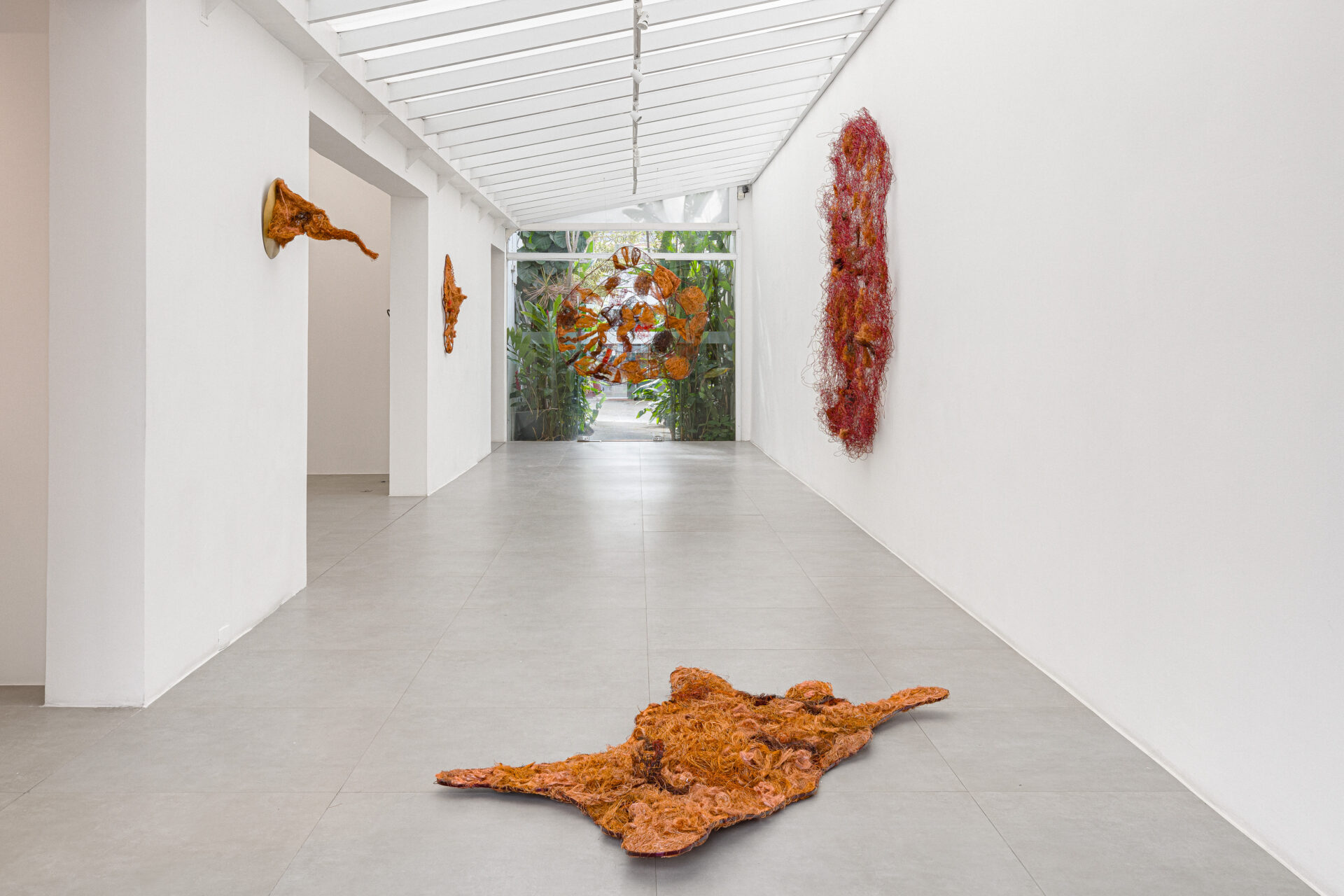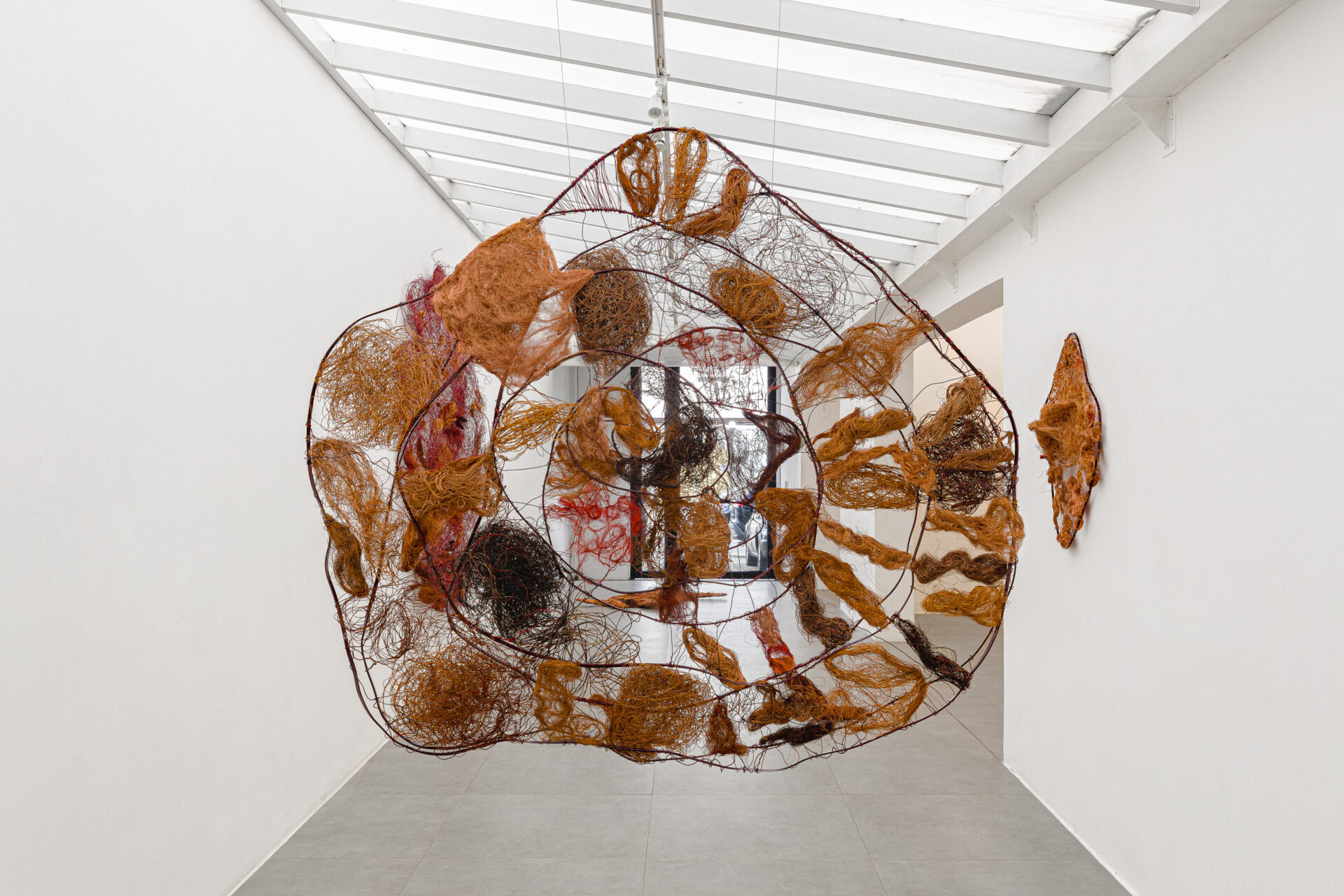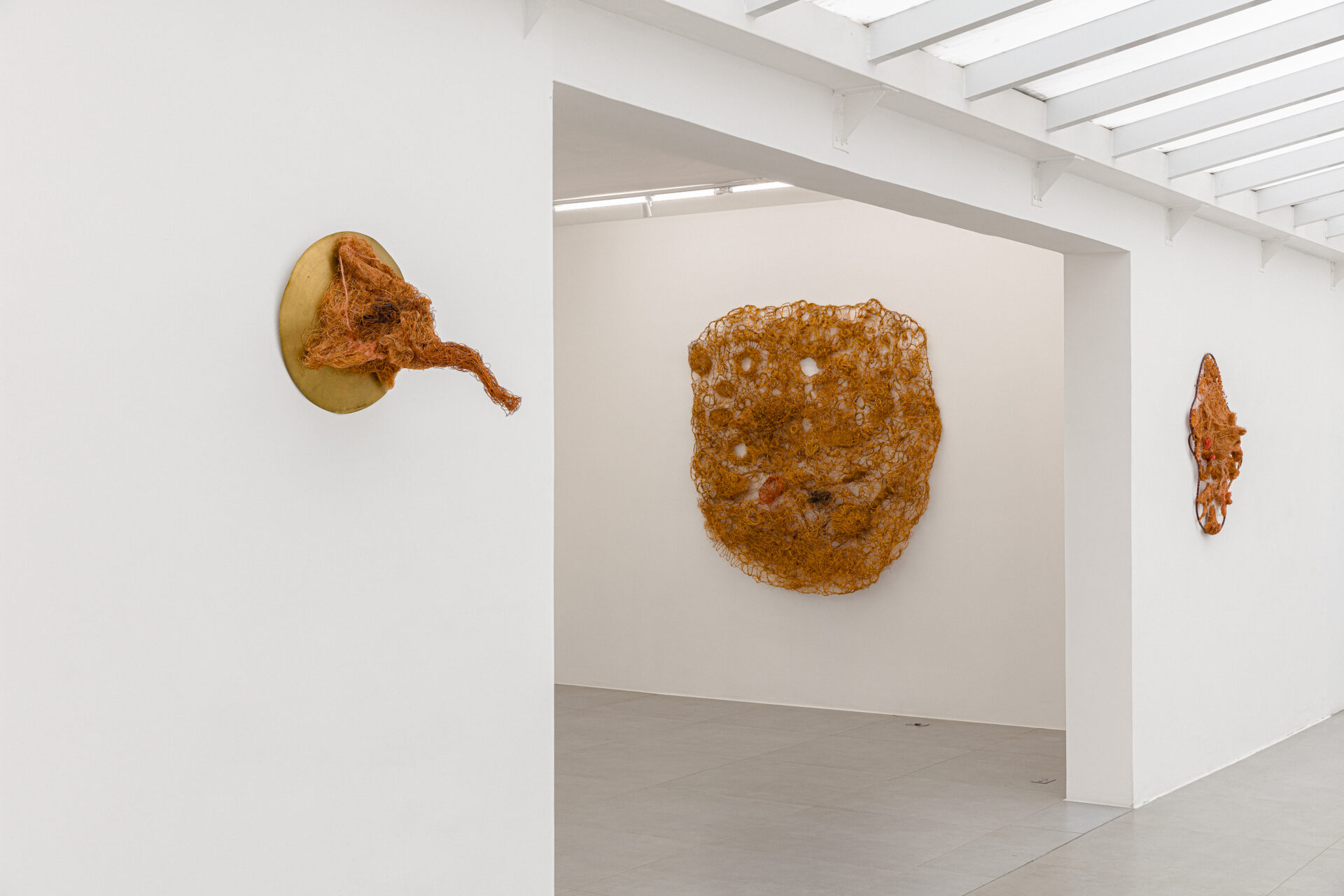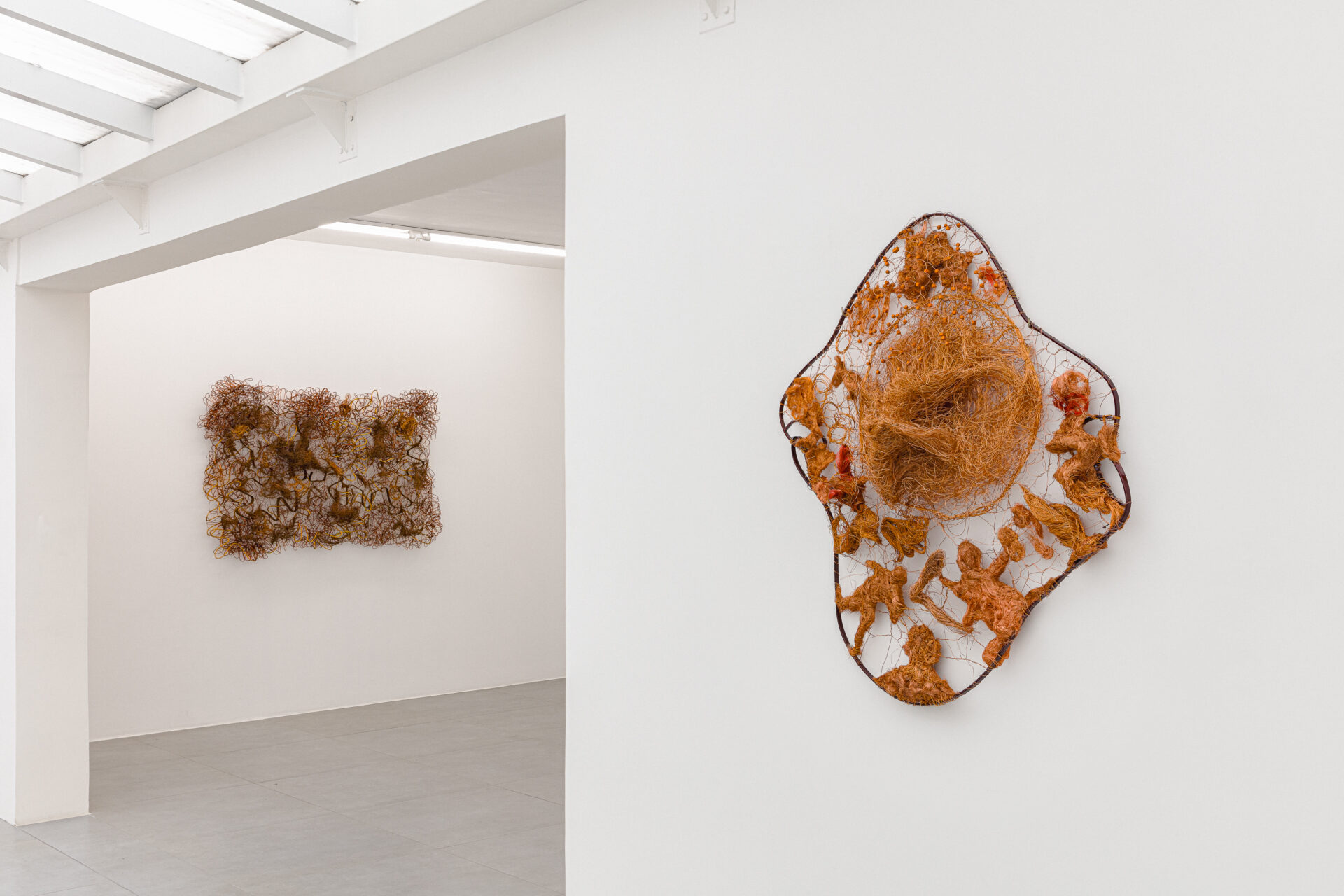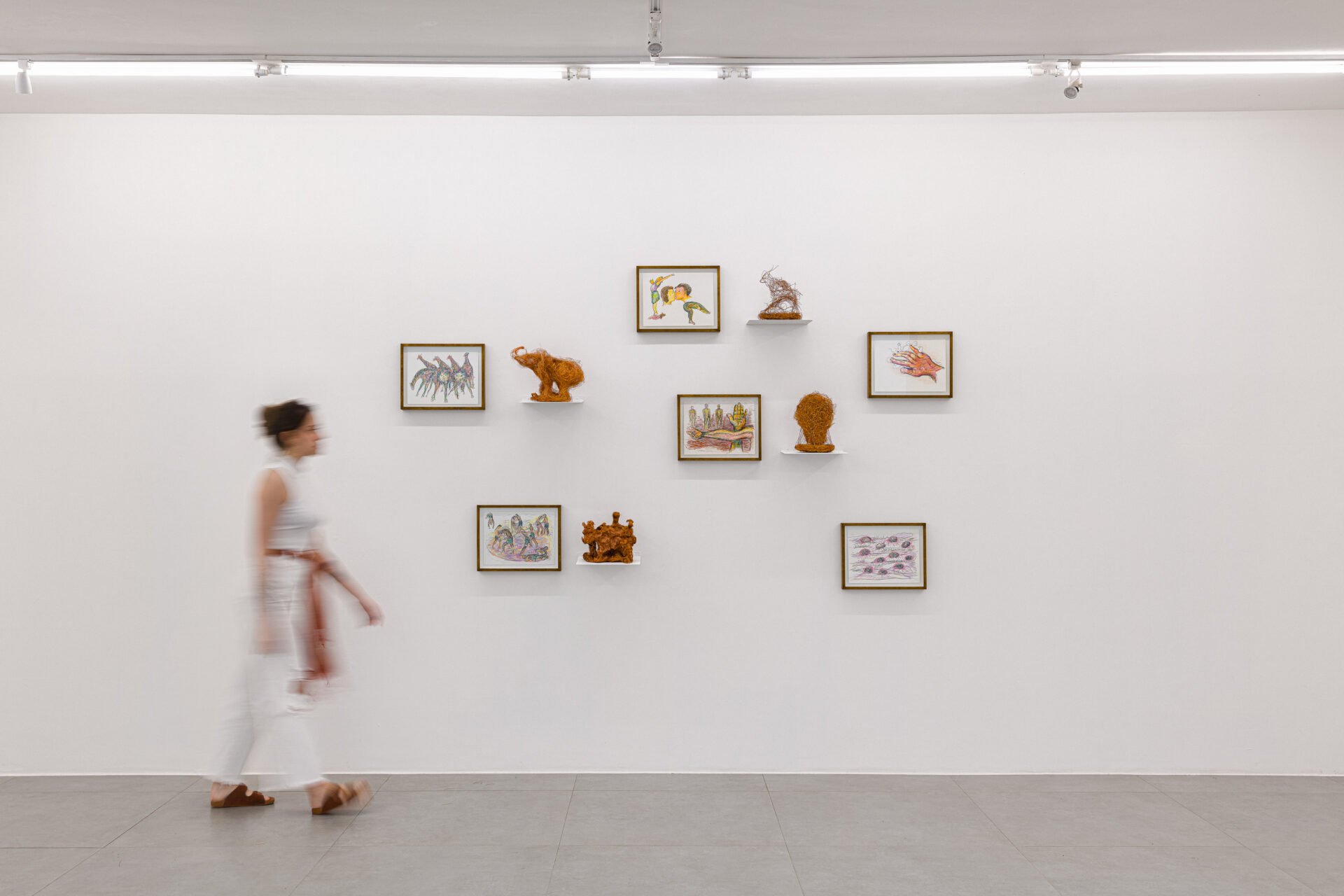Imaginary Plot
Luiz Hermano is a student of the line. As a good creator, he manipulates it in any nature or dimension: from the two-dimensionality of a paper or metal sheet to the three-dimensionality of a rubber or copper wire. Give him a line and he will give you the universe. However, his understanding of the line differs from some of its masters, such as Alexander Calder or Saul Steinberg, who, gracefully handling it, obtain dynamic and convincing forms. For Luiz Hermano, the form is the consequence. His interest is in what the line conveys.
This is because his treatment of the line does not conceive it as an innocent element, a mere vein for formal arrangements. He understands it as a nerve, a conductor, a wire, a means of transport for a stimulus, a charge, a message. Luiz Hermano’s lines carry a high voltage. They can turn into anything. And also swallow anything.
A material that has been frequently present in his poetics in recent times is copper wires, an element known to be an excellent conductor of electric charge and overwhelmingly used in energy transmission. In the same way that our nerves and neurons act as energy conductors in organic circuits, copper wires fulfill this role in mechanical electrical circuits. Luiz Hermano likes all of these. He only needs to enable the passage of energy, and then his attitude resembles that of an electrician.
Some of his copper works consist of strange swirls, apparently deformed, but which bring with them other tangles that make up recognizable beings and objects, such as people, elephants, dogs, cars, and airplanes. All this formed by complex and endless tangles of copper wire, which create a strong vibration sensation, a luminous and searing flow of life and energy that emanates from these tortuous arrangements. An almost ritualistic flame that swallows everything. It is not by chance that many of these characters there entangled were independent structures that ended up swallowed by this copper brazier.
Given the high energy load they seem to emanate, copper wires can be used in endless possibilities. In a given arrangement, these beings are ordered in a sequence entangled in a species of metallic clothesline. Aiming at bidimensionality, the compositions seem to create a narrative, which the artist calls Contos [Tales]. They can also metamorphose into peculiar objects, such as ones whose shape resembles the skin of an animal (which Luiz Hermano named Preguiça [Sloth], a possible tribute to the tropical animal or perhaps just a compliment to the celebration of leisure), and which could be used as a rug. Due to its delicate and luminous appearance, copper wire can emanate a textile and soft aspect. In another sculpture, whose base is a drum plate (made of the ever-ubiquitous copper, but now made to conduct sounds), a complex is configured that imitates (or becomes) an elephant’s head. The energy that its material carries is natural and such that its beings come to life. And once alive, they can be hunted, as it is the case with the proboscis, whose head under the plate seems to be presented as a hunting trophy.
On paper, away from the copper filaments, the thread behaves the same way, like a rib. Tortuous, pulsating, sensitive. The situations and writings he traces are under high tension. To such an extent that the lines that form them, subjected to a high frequency, seem to conflict with the configuration they assume. Luiz Hermano can tell stories with them, but recognizes their instability. His drawings seem to be on the verge of a short circuit.
We are made of wires. Our internal architecture, from the microscopic neuron to our most vital organs, are complexes of filaments. Our increasingly vivid machines consist of electrical boards and wires (or else that vibrate through non-matter waves, such as radio and wi-fi). Luiz Hermano enters as an anatomy or electrical engineering student, providing more clarity on our functioning.
Theo Monteiro
